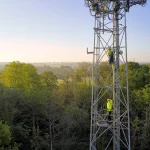Openreach Prep New Pricing for FTTC and G.fast Broadband UPDATE

Openreach (BT) has today given 2 years of advanced notice for a “pricing special offer” on their wholesale Fibre-to-the-Cabinet (FTTC / VDSL2) and G.fast based hybrid fibre broadband products for UK ISPs (including SOGEA and SOGfast), which once implemented will cover the period from 21st August 2023 to 31st January 2024.
The public briefing says that this is all about helping to “provide pricing certainty” on these products beyond the current 5 year-term of the existing offer. The new offer would initially only run for a 5-month period, although Openreach added that they were “continuing to explore options for providing further pricing certainty beyond this offer period, with up to 2 years’ notice provided.”
However, we’ve struggled to understand why they’re presenting the information in the way they’ve chosen. For example, at present Openreach’s 55Mbps download (10Mbps upload) FTTC tier attracts an annual rental of £101.76 +vat, but the new offer page states that, from 21st August 2023 for the same tier, the annual rental will be “£12 in addition to the rental price for [40Mbps down / 10Mbps up]” and they do this for other products too.
Advertisement
The 40/10Mbps tier, which is regulated by Ofcom, is currently priced at £60.54 per year, so that would seem to make the 55/10Mbps tier above £60.54 + £12 = £72.54 +vat, which is cheaper than the current rental of £101.76. But at this point the presentation doesn’t make a lot of sense (i.e. why not just give a clear price instead of mixing up product references?). Confusingly, the 80/20Mbps tier is given the same exact pricing.
| Feature | Operative Date | Until Date | Annual Rental £ Exc Vat |
|---|---|---|---|
| GEA FTTC Up to 40Mbit/s downstream and up to 10Mbit/s upstream | 21/08/2023 | 31/01/2024 | refer to prevailing rental price for GEA FTTC up to 40Mbit/s downstream and up to 10Mbit/s upstream on price list 5.2.1 |
| GEA FTTC Up to 55Mbit/s downstream and up to 10Mbit/s upstream | 21/08/2023 | 31/01/2024 | £12 in addition to the rental price for GEA FTTC Up to 40Mbit/s downstream and up to 10Mbit/s upstream in this table. |
| GEA FTTC Up to 80Mbit/s downstream and up to 20Mbit/s upstream | 21/08/2023 | 31/01/2024 | £12 in addition to the rental price for GEA FTTC Up to 40Mbit/s downstream and up to 10Mbit/s upstream in this table. |
| GEA FTTC Up to 160Mbit/s downstream and up to 30Mbit/s upstream | 21/08/2023 | 31/01/2024 | £36 in addition to the rental price for GEA FTTC Up to 40Mbit/s downstream and up to 10Mbit/s upstream in this table. |
| SOGEA 40/10 Mbit/s | 21/08/2023 | 31/01/2024 | refer to prevailing rental price for SOGEA up to 40Mbit/s downstream and up to 10Mbit/s upstream on price list 5.5.1 |
| SOGEA 55/10 Mbit/s | 21/08/2023 | 31/01/2024 | £12 in addition to the rental price for SOGEA Up to 40Mbit/s downstream and up to 10Mbit/s upstream in this table. |
| SOGEA 80/20 Mbit/s | 21/08/2023 | 31/01/2024 | £12 in addition to the rental price for SOGEA Up to 40Mbit/s downstream and up to 10Mbit/s upstream in this table. |
| SOGEA 160/30 Mbit/s | 21/08/2023 | 31/01/2024 | £36 in addition to the rental price for SOGEA Up to 40Mbit/s downstream and up to 10Mbit/s upstream in this table. |
We have queried this highly confusing approach with Openreach in the hope of getting the proper context, although with this being a Friday afternoon we might not get a reply today.
UPDATE 23rd Aug 2021
Openreach has informed that the reason why they show their prices in this manner is because it’s impossible for them to know what the pricing will be on the Ofcom regulated anchor product (40/10 Mbps) in 2023, as well as what CPI increases the market might be subject to (i.e. it’s a safe way to provide certainty and maintain the gap to 40/10).
Advertisement
The approach also avoids a cliff edge for ISPs, which would otherwise occur in August 2023 when all the prices would go back up to a list price. We should add that our price comparison example above is based on the list vs discounted price, but all ISPs are already using the existing discounted rate.
Openreach also noted that the 55/10 and 80/20 tiers are priced equivalently today, and that will continue in 2023.
Mark is a professional technology writer, IT consultant and computer engineer from Dorset (England), he also founded ISPreview in 1999 and enjoys analysing the latest telecoms and broadband developments. Find me on X (Twitter), Mastodon, Facebook, BlueSky, Threads.net and Linkedin.
« Trooli Get GBP67.5m Funding Boost for UK Full Fibre Rollout






















































That is a pretty bizarre approach.
Odd that there is not ‘commitment’ from ISP’s.
I would have though that the commitment would have been to facilitate FTTP migration where possible to open access to these prices……
Doesn’t commitment normally mean “an agreement to sell a certain number of new contracts” in order to get the special prices? This pricing is available for all ISPs regardless of new sales volumes.
I kind of disagree. The X + $regulated_price makes alot of sense as the regulated price will effectively be formulaic based on Openreach making a small IRR (usually ~5%). They are effectively saying it will be cost+5% plus £12 a year. The incremental cost of running 80/20 vs 40/10 is effectively 0. There is literally no difference except perhaps the cost of upgrading a cab>echange link slightly earlier but that is extremely rare. Very, very few cabinets need more than 1G of capacity.
The FTTP pricing will be based on a commitment to only sell FTTP in areas where there is a choice of FTTP and FTTC, so they’ve already taken account of this. For almost all CPs this FTTC pricing will be used for FTTC only premises.
Presumably no specific pricing as they don’t know how much 40/10 will be in 2023 – this product is regulated IIRC so at the whims of Ofcom.
Then why tie other products to the price of the unknown? On an £n + £11 basis.
If OFCOM decide that a social tier is free then OR would be totally stuffed!
Can push back if Ofcom make things excessively cheap. The pricing presumably reflects incremental cost.
Costs to Openreach of providing 80, 160 or 330 over FTTC are almost identical. They only have to get the traffic back to the Cablelink.
The reason for the odd pricing is specifically because the 40/10 is regulated by Ofcom. They are basically saying that whatever the 40/10 price is at the start of the offer, the other products will come in at those specific amounts above the 40/10 price.
Is this advance notice of future price differentials just a way of undermining the business case for AltNets? Any new networks will be competing with these reduced prices by the time they go live.
No I see this as clearly giving the ISPs who are currently denied access to Altnet networks to plan ahead.
Its not in Ofcom’s interest to lower prices (pressure from Altnets) and will want to encourage migration to FTTP. OR will want the 40/10 and these differentials to rise by CPI.
With these going up by CPI (at the end of the current agreement) and leading ISPs raising their prices by CPI + 3* % its a good opportunity for the smaller ISPs until proper FTTP competition is established in commercial areas.
Hmm. How does knowing the future price help ISPs that resell OR to plan? They just resell OR at whatever price – they’re not investing in building networks themselves so the only risk is their margins being squeezed by AltNets. However, the Altnets that are investing in building networks will see their future returns diminished as they will be competing with the lower OR prices, so may decide not to build.
Openreach gave notice of pricing until 2023 a while back. This is business as usual for them.
If the price of 40/10-80/20 is a concern, I don’t count g.fast as the only altnet likely to overbuild that in any volume would be CityFibre, altnets need to look at their business models either way.
@AnotherTim. The further out any business can plan and reduce variables the better. We will be in a state of flux now for the next few years. The many ISPs have varying business models themselves and many ways to provide their backhaul. Capacity needs to be negotiated and renewed. Some will be negotiating with Altnets (like ZEN), some will be planning to stay with OR with FTTP or both, others may actually be considering whether they can stay in business.
The areas that will be on FTTC longer are probably high on their agendas.
Ofcom will be criticised if it is seen to arbitrarily increase prices, disadvantage companies or reduce consumer choice either in the short or long term.
Only £1 per month for 80/20 over 40/10 means that the 40/10 level will most likely be squeezed out altogether at retail. It’s a way for Openreach to get £1 per month more than their regulated price.
It’s also a way for Openreach to be able to compete with altnets in the medium term, who deliver over FTTP but primarily compete on price. The vast majority of users don’t want any more than 80/20, and those who are close enough to the cabinet to get it, will be happy to stick with it if the price is right.
Once OR FTTP is widely deployed, of course then they will be looking to move users over to that. Users won’t accept a big price bump for the “same” service, so you can expect downwards movement in OR FTTP too – which is a good thing for consumers overall.
The regulated price means that if Openreach can make a profit, then surely the nimbler, cherry-picking altnets can make a profit too.
its because thre is an offer that will come to an end, the price aligns to the currnt pricing that the offer brings, so instead of the cost going back to full cost they have provided cover for the 5 months. FTTC is kind of dead anyway considering from 2023 Sept, you will not be able to order it.
You will be able to order SOGEA though, which is FTTC without the PTSN line.